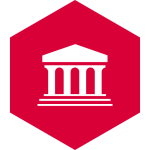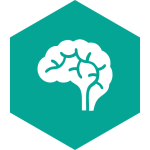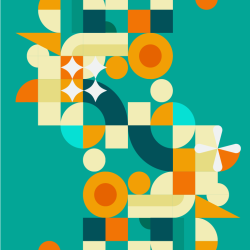Launching an AI Learning Community for Community College Employees
Author: Kate Krieg (United States)
Stakeholders: Educators, Administrators, Policy Makers, Librarians, Researchers
Context and Challenge
The Washington State Board for Community and Technical Colleges (SBCTC) identified a need to support AI literacy among community college employees. Some have felt excluded from AI conversations and AI skill-building, which affects their ability to support students effectively in an increasingly AI-integrated educational landscape. This is particularly important for practitioners working with students of color, who risk being further marginalized if not included in AI literacy development. I am a consultant who connected with a colleague at the WA SBCTC who is leading the effort to start an AI learning community to address the need described above.
AI Literacy in Practice
As mentioned above, I am partnering with a colleague to build an AI learning community for community college employees across Washington’s 34-institution system. The initiative demonstrates multiple dimensions of AI literacies working in concert to address systemic challenges.
- The Civic dimension serves as the primary framework. The learning community explicitly aims to enhance employees’ AI literacies to better serve students and advance institutional missions of access and equitable outcomes. Participants will develop skills to ensure AI tools serve all students rather than creating new barriers, directly contributing to community empowerment.
- The Critical dimension is embedded throughout the program as participants examine power dynamics and ethical considerations in AI implementation. The initiative emphasizes developing ethical, critical thinkers who can harness AI’s potential responsibly.
- Confident and Cognitive literacies are fostered through structured peer-to-peer opportunities. The learning community creates space for participants to learn, fail, and build confidence together, not in isolation.
- Constructive elements will also happen during the implementation phase when participants use AI tools to build and generate new content that addresses specific work/role needs.
Structure and Implementation
The learning community spans October 2025 through June 2026, featuring a kick-off session, four virtual engagements, and one intensive six-hour event in December 2025. Participants from diverse roles across the state system will take this foundational AI literacies course, engage in community-building activities, and develop individual AI projects to implement on their campuses.
Outcomes and Assessment
We’re still considering how to measure success, but we will focus on peer connections and confidence levels in AI usage. We hope that the learning community will address three core challenges: building practical knowledge and mindsets for AI use, developing capacity to ensure equitable AI implementation, and creating learning environments that reduce isolation while building collective confidence in AI technologies for student success.
|
Primary Dimension
 CIVIC – Employing AI knowledge and skills to contribute positively to society, using AI to foster community empowerment, engagement, and societal progress CIVIC – Employing AI knowledge and skills to contribute positively to society, using AI to foster community empowerment, engagement, and societal progress Constellating Literacies
Cognitive, Constructive, Confident, Critical
|
Interrogating Concepts Through AI Mediation
Author: Lennox Olivier (South Africa)
Stakeholders: Educators, Students, Researchers
Context: Third-Year Political Sociology (Faculty of Arts and Social Sciences) – Formative Assessment Activity
The formative assessment comprised two distinct components.
Part 1 – Independent Online Activity
Students were provided with a question requiring them to explain the meaning of a designated concept. They were instructed to submit this question to ChatGPT and to engage in an iterative dialogue with the system, posing a minimum of five and a maximum of ten follow-up prompts aimed at refining and improving the initial response.
The submission for this component consisted of:
-
The full transcript of all prompts and chatbot responses.
-
A final summary of approximately 500 words synthesising the chatbot’s responses.
Students were advised not to rely solely on the chatbot to produce the summary, but rather to integrate their own understanding and to ensure that the text reflected their own voice and interpretation.
Part 2 – Controlled Environment Activity
In a secure, locked-down setting without access to the internet, personal notes, or other resources, students were provided with a three-page text authored by a scholar who critically examines the same concept addressed in Part 1. The text problematises prevailing definitions, tracing historical usage and proposing an expanded interpretation that includes contexts largely overlooked in existing literature.
Students were tasked with explaining their understanding of the author’s conceptualisation and identifying how it diverges from the more general definition of the term. In particular, they were required to assess the extent to which the author’s interpretation differed from the explanation generated by the chatbot in Part 1.
Assessment criteria rewarded:
-
Clear identification and explanation of the differences between the author’s definition and the general understanding of the concept.
-
Demonstrated depth of engagement with the prescribed text, supported by evidence from the reading.
Students were further required to reflect on the differences between the meanings provided by the chatbot and the prescribed reading. Notably, none of the students succeeded in eliciting from the chatbot the specific, field-specific definition advanced by the author. Those who explicitly recognised and articulated that the chatbot only provided a general, non-specialist definition, rather than the nuanced disciplinary interpretation, were credited for this insight.
Following the controlled environment activity, students were granted the opportunity to return to ChatGPT and query it further regarding the author’s specific conceptualisation. This follow-up task aimed to examine how the chatbot responded to, and potentially integrated, this more specialised and context-specific meaning into its subsequent explanations.
In part 1 of this exercise students were given the opportunity to explore with AI as a constructive tool, while also engaging with cognitive and confident dimensions. Part 2 illustrates through first hand experience that one has to be cautious of the limits of a chatbot (always be critical) and to realise how bots tend to provide the most common and general understanding first, often missing the specific disciplinary definitions and understanding used in academic texts, unless prompted to do so.
|
Primary Dimension
 CONSTRUCTIVE – Utilizing AI tools to build, remix, and generate new content, applying AI capabilities CONSTRUCTIVE – Utilizing AI tools to build, remix, and generate new content, applying AI capabilities Constellating Literacies
Cognitive, Confident, Critical
|
Cognitive AI literacy: Expanding my intellectual capabilities
Submission Location: South Africa
Stakeholders: Educators, Administrators, Policy Makers
While working on a complex research project, I used an AI-powered data visualization platform to explore patterns in a large dataset. My primary focus was on cognitive AI literacy, expanding my intellectual capabilities by leveraging AI’s capacity to process and present information in ways that would be time-consuming or difficult manually. By experimenting with different queries and visualization formats, I was able to uncover relationships between variables that I had not initially considered, prompting new lines of inquiry.
The main challenge was ensuring I fully understood the AI’s analytical processes and avoiding overreliance on its suggestions. At times, the AI-generated visuals highlighted correlations that required deeper contextual interpretation to avoid misrepresenting the data. This meant I had to balance trust in the AI’s efficiency with my own critical evaluation skills.
Engaging with AI in this way not only accelerated my research but also broadened my ability to think through problems from multiple perspectives. By iteratively refining prompts and interpreting outputs, I developed a more dynamic, exploratory approach to analysis, one that blended human judgment with machine-assisted insight. This experience reinforced how AI can extend intellectual reach when used with curiosity, adaptability, and thoughtful oversight.
|
Primary Dimension
 COGNITIVE – Expanding intellectual capabilities by engaging with AI-enabled processes and environments COGNITIVE – Expanding intellectual capabilities by engaging with AI-enabled processes and environments Constellating Literacies
Constructive, Communicative
|
AI Prompts for Instructional Design
Author: Kim Grewe (United States)
Stakeholders: Educators, Specifically, faculty in community college who are serving as SMEs or content developers on instructional design projects.
In this case example, I created a library of AI prompts designed to help community college faculty engage in instructional design tasks through structured dialogue with generative AI tools like ChatGPT or Gemini. The prompt library includes detailed guidance for tasks such as writing learning objectives, creating rubrics, designing authentic assessments, and developing course maps. Each prompt positions the AI as a helpful teaching assistant who engages the user in a pedagogically grounded conversation—rather than merely producing outputs—thereby supporting deeper faculty engagement and professional learning.
The prompts are written in plain language, emphasize instructor expertise, and follow a two-question-at-a-time structure to avoid cognitive overload. They are openly licensed (CC BY 4.0) and are used with faculty developers (SMEs) working on instructional design projects.
This case demonstrates AI literacy in a faculty development context by helping educators interact critically and constructively with generative AI. The prompt library supports cognitive, communicative, and cultural dimensions of AI literacy by scaffolding conversations that center human judgment and pedagogy. Faculty learn not just what AI can do, but how to guide it responsibly in alignment with learning goals.
Key takeaways:
- Faculty are more likely to adopt AI when given purposeful, scaffolded prompts.
- Structured dialogue empowers instructors to maintain control and integrate AI outputs thoughtfully.
- Ethical AI use is reinforced by transparency, open licensing, and acknowledgment of human/AI co-authorship.
Challenges addressed include:
- Faculty overwhelm or mistrust of AI tools.
- Poor-quality or decontextualized AI outputs when prompts are vague.
- Lack of structure in current AI adoption initiatives.
This model encourages critical experimentation and positions faculty as co-designers (not passive consumers) of AI-supported instruction.
|
Primary Dimension
 CONSTRUCTIVE – Utilizing AI tools to build, remix, and generate new content, applying AI capabilities CONSTRUCTIVE – Utilizing AI tools to build, remix, and generate new content, applying AI capabilities Constellating Literacies
Cognitive, Confident, Creative
|
Seeing Through the Screen: Community Conversations on AI, Power, and Possibility
Submission Location: United States
Stakeholders: Community Members
I facilitated a community-based learning series focused on responsible and accessible AI use. The sessions invited participants to explore what AI means for education, work, and everyday decision-making centering local needs and lived experiences rather than tech industry hype.
This example emerged from a community education initiative designed to demystify AI for everyday users. Participants engaged in discussions about how AI tools shape what we see online, how our data is used, and how these systems may reflect or amplify existing inequalities. The series also included hands-on activities like testing AI-generated writing, comparing search results, and examining AI art tools.
AI literacy was demonstrated through the group’s ability to ask better questions about AI tools, evaluate outputs with greater awareness, and reflect on their own roles as users, creators, and citizens. Community members expressed increased confidence in navigating AI in ways that aligned with their personal values and responsibilities.
Challenges included skepticism about AI relevance, concerns about surveillance, and unequal access to digital tools. These were addressed by grounding the work in familiar, practical contexts,such as job searches, health information, and creative projects and by making space for dialogue rooted in trust and mutual learning. This example highlights how AI literacy can support community empowerment, critical awareness, and meaningful engagement in a rapidly changing digital world.
|
Primary Dimension
 CRITICAL – Examining the power dynamics and ethical considerations inherent in AI practices, reflecting on the broader societal impacts of AI-driven decisions and actions CRITICAL – Examining the power dynamics and ethical considerations inherent in AI practices, reflecting on the broader societal impacts of AI-driven decisions and actions Constellating Literacies
Cultural, Cognitive, Constructive, Communicative, Confident, Creative, Critical
|
Laying the Groundwork for AI Adoption in Staff Workflows
Submission Location: United States
Stakeholders: Educators
We are in the early stages of introducing AI tools to help staff reduce repetitive, time-consuming tasks. Our aim is to explore practical applications like automating calendar scheduling, generating meeting notes, and streamlining routine email responses. While implementation is ongoing, we’ve started engaging staff in discussions and demonstrations to build awareness and confidence. This case illustrates a constructive and cognitive approach — not just applying AI tools but preparing our teams to work alongside them thoughtfully and creatively. The focus is on enabling future-ready capabilities and ensuring that access to these tools is equitable and relevant to staff needs.
|
Primary Dimension
 CONSTRUCTIVE – Utilizing AI tools to build, remix, and generate new content, applying AI capabilities CONSTRUCTIVE – Utilizing AI tools to build, remix, and generate new content, applying AI capabilities Constellating Literacies
Cognitive, Confident, Creative, Civic
|
Using AI to Enhance Feedback on Excel Projects for Non-Traditional Students
Submission Location: United States
Stakeholders: Educators, Students
As a faculty member with over 15 years of experience teaching online and a background in instructional design and educational technology, I regularly teach Microsoft Excel to non-traditional higher education students—many of whom do not initially see the value of the course. To increase engagement and relevance, I integrate AI tools (such as ChatGPT and Microsoft Copilot) to co-create project scenarios tailored to students’ real-life interests, such as managing a small business budget or planning a personal trip.
By applying creative literacy, I’ve transformed a traditionally technical and often underappreciated course into a space for personal relevance and applied learning. Students report increased motivation and clarity when projects are aligned with their goals. This use of AI not only boosts engagement but also serves as a model for thoughtful, intentional AI integration in teaching and learning.
Challenges Encountered:
-
- Student Skepticism or Inexperience with AI Tools: Many non-traditional students are unfamiliar with generative AI or hesitant to trust it, requiring additional orientation and support to build digital confidence.
- Balancing Authenticity and AI-Generated Content: There’s a fine line between using AI to enhance project design and ensuring that student work remains authentic and reflective of their own thinking.
- Keeping Up with Rapid AI Tool Evolution: As tools like Copilot and ChatGPT evolve quickly, staying current on features and ethical considerations requires ongoing professional development and institutional support.
|
Primary Dimension
 CREATIVE – Engaging in ideation and generative actions using AI, focusing on how AI can add value and introduce new possibilities within specific contexts CREATIVE – Engaging in ideation and generative actions using AI, focusing on how AI can add value and introduce new possibilities within specific contexts Constellating Literacies
Creative
|
AI Toolkit from St. John Fisher University
Author: Katie Sabourin (United States)
Stakeholders: Educators, Administrators, Librarians
To help navigate the rapid advancements in artificial intelligence, St. John Fisher University’s DePeters Family Center for Innovation and Teaching Excellence, in collaboration with faculty and staff, has launched a comprehensive AI Toolkit. This valuable campus resource serves as a central hub for understanding the implications of AI and generative AI on our teaching and learning environment. The toolkit features a glossary of key AI terms, clear instructions on accessing university-approved AI tools, and practical advice for using both protected and unprotected AI tools responsibly and ethically. It also guides users on crafting effective prompts for optimal results and provides crucial methods for evaluating AI-generated content for accuracy and potential bias. While initially developed in summer 2023, the AI Toolkit undergoes continuous updates to ensure it remains current with the latest technologies and pedagogical approaches.
|
Primary Dimension
 COGNITIVE – Expanding intellectual capabilities by engaging with AI-enabled processes and environments COGNITIVE – Expanding intellectual capabilities by engaging with AI-enabled processes and environments Constellating Literacies
Communicative, Confident, Critical
|
Enhancing Instructional Design in Public Libraries through Collaborative AI Literacies
Author: Witt Salley (United States)
Stakeholders: Educators, Librarians, Community Members
Context: As a public librarian and online educator, I use AI tools to support instructional design and learner engagement. This case specifically examines a professional development session at Montgomery County Public Libraries focused on integrating AI-generated multimedia content into instructional resources for information literacy and digital citizenship education.
AI Literacies Applied: The session primarily highlighted creative and communicative AI literacies. I demonstrated methods for generating dynamic, interactive content (e.g., infographics, videos, and interactive tutorials) using ChatGPT and Canva’s AI features. The session effectively communicated practical benefits, including enhancing learner engagement and clarity in such topics as evaluating digital sources and understanding media bias. Participants practiced using these AI tools creatively to produce engaging multimedia materials tailored for English Conversation Club sessions, Teen Advisory Board meetings, and adult digital literacy classes.
Challenges: Initially, participants—including myself—experienced difficulty envisioning how AI-generated multimedia could meaningfully enhance traditional instructional methods used in library programs. Concerns included potential biases embedded in AI-generated content, ensuring content accuracy in sensitive topics such as misinformation, and effectively integrating these materials into the existing curriculum framework for diverse audiences.
Impact: The collaborative session enhanced participants’ ability to leverage AI creatively and effectively in instructional design. By openly addressing challenges, experimenting with specific use cases, and sharing practical insights, participants developed greater confidence and enthusiasm toward integrating AI-generated multimedia resources. Ultimately, this collaboration resulted in enriched instructional materials that promoted deeper engagement, critical thinking, and comprehension among diverse library patrons.
|
Primary Dimension
 CREATIVE – Engaging in ideation and generative actions using AI, focusing on how AI can add value and introduce new possibilities within specific contexts CREATIVE – Engaging in ideation and generative actions using AI, focusing on how AI can add value and introduce new possibilities within specific contexts Constellating Literacies
Constructive, Communicative, Critical
|
Selective Input for Trusted Output
Submission Location: Canada
Stakeholders: Educators, Community Members
An instructional designer wanted to learn more about generative AI content tools that could support their program creation. They initially approached AI tools for content development with hesitation, but their attitude changed as they gained a clearer understanding of how different tools operate and how their input affects the outcome.
The instructional designer’s primary concern stemmed from the possibility of inaccuracies or misleading information, often associated with generative AI, given the existence of “fake news.” They were unaware that some tools could be configured to rely solely on their curated sources to generate new content items. By leveraging AI tools like this, generating new content items based on the already existing content for the course offers time-saving solutions to increase learner engagement.
|
Primary Dimension
 CONSTRUCTIVE – Utilizing AI tools to build, remix, and generate new content, applying AI capabilities CONSTRUCTIVE – Utilizing AI tools to build, remix, and generate new content, applying AI capabilities Constellating Literacies
Cognitive, Communicative, Creative
|
Using AI to Educate Educators
Submission Location: United States
Stakeholders: Educators, EdTech Employees
In my role, I often host webinars and other professional development sessions for educators across K12, Higher Education, and Corporate learning environments. My team and I recently started a webinar series to help reach more clients across North America and beyond. We’ve used AI tools like ChatGPT in many areas while creating this series, both before the series was announced and as it continues. AI tools have helped us to determine what topics are top of mind for the different educators we’re supporting, when those topics are most meaningful, and even how to communicate those topics in different ways to educators in a K12 setting vs a Higher Ed setting and beyond. In addition to creating a structure, AI tools have also helped us tailor the communications and marketing of these webinars to our different audiences. Not only have we been able to stay organized with the planning and implementation of this series but we’ve been able to save time by using these AI tools. One of the topics we have planned for the future is focused on empowering educators with AI and how to use our platform’s AI tools to help personalize learning and keep learners engaged.
|
Primary Dimension
 COMMUNICATIVE – Leveraging AI technologies to convey ideas effectively, recognizing the sociocultural practices and nuances that AI interprets and influences in different settings COMMUNICATIVE – Leveraging AI technologies to convey ideas effectively, recognizing the sociocultural practices and nuances that AI interprets and influences in different settings Constellating Literacies
Constructive, Confident, Civic
|
Establishing an AI Resource Hub to Build AI Literacies
Author: Anthea H M Jacobs (South Africa)
Stakeholders: Educators
Context
In an attempt to create a platform or space for colleagues in my faculty to share AI related practices/ experiences, and to create awareness around AI related conversations, I am in the process of trying to establish an online Faculty AI Hub. This is work-in-progress. I am doing it as a Google Site, and I have not published it yet.
This initiative was spearheaded as part of my role as Learning and Teaching Specialist in the Faculty, in response to increased interest in generative AI and the absence of a unified institutional approach to staff development in this area.
AI Literacies Applied
- Cognitive Literacy: Familiarising staff with generative AI tools and their functions in academic workflows.
- Critical Literacy: Encouraging critical evaluation of AI-generated outputs, including bias detection, fact-checking, and ethical use.
- Cultural Literacy: Highlighting responsible engagement with students and colleagues using AI, and promoting co-creation of knowledge.
- Constructive Literacy: Building awareness of how AI systems are trained, the implications of data ownership, and transparency in using such tools.
Application in Instructional and Leadership Contexts
In the instructional context, the intention is to introduce academic staff to various AI tools and support them in integrating it into their teaching practices.
The Hub will be strategically used to align AI practices with the university’s AI Guidelines; to empower Heads of Department to cascade AI insights to their teams; and to facilitate ongoing consultation with the technical support team to embed AI into institutional teaching systems.
Challenges Faced
- A potential challenge is the resistance to adoption of AI because some academics fear AI would erode academic integrity or devalue human expertise.
- The Institutional AI Guidelines are not well circulated.
- Varying AI Confidence: Staff digital literacy levels are uneven, requiring differentiated support strategies.
Impact of the Engagement
The Faculty AI Resource Hub could potentially become centralised, living repository for tools, examples, and policy updates. It could also lead to increased confidence and curiosity in experimenting with AI for teaching-related tasks. One of the main aims is to fostered cross-departmental collaboration, initiating faculty-wide conversations on AI integration.
|
Primary Dimension
 COGNITIVE – Expanding intellectual capabilities by engaging with AI-enabled processes and environments COGNITIVE – Expanding intellectual capabilities by engaging with AI-enabled processes and environments Constellating Literacies
Cultural, Constructive, Critical
|
University of Hawai’i AI Explorers building AI Confidence Literacies via Innovation Playground Series
Submission Location: United States
Stakeholders: Educators
AI has made a sudden impact on higher education, and society in general. Faculty at the University of Hawaiʻi were eager for a safe place to ask questions, learn about AI, and explore without feeling intimidated. In response to this need, the University of Hawaiʻi Online Innovation Center offers a series of opportunities for faculty to explore new and emerging technologies through the Innovation Playground series. Over the past two academic years, many of the Innovation Playground sessions have focused on AI. During each session, faculty are introduced to one or more AI tools, and then engage in collaborative hands on exploration with the technology in breakout sessions (playgrounds). In addition to collaborative break out rooms, opportunities for quiet individual exploration are also provided. The session concludes with all participants coming together to share insights gained, and their plans for further exploration and potential integration of the technology into their professional practice. The Innovation Playground sessions support the AI Confidence Literacies.
UH faculty who extend their learning and skill sets with AI tools have the opportunity to expand their confidence in AI capabilities by deploying it in their teaching, research, or other creative endeavors, earning the AI Explorer Digital Badge.
The Innovation Playground series and AI Explorer Digital Badge also allow the opportunity for faculty to engage in creative exploration (Creative AI Literacies) through their own learning, and by learning collectively in a community of practice. This collaborative community of practice model for AI exploration can also spark opportunities for faculty to co-create new opportunities together, or to develop the confidence to lead their students in the use of AI tools as part of revised or remixed authentic assessment practices (Constructivist Literacies, and Cognitive Literacies).
|
Primary Dimension
 CONFIDENT – Developing the ability to solve problems and manage learning within AI-driven environments by understanding and harnessing their unique features and potentials CONFIDENT – Developing the ability to solve problems and manage learning within AI-driven environments by understanding and harnessing their unique features and potentials Constellating Literacies
Cognitive, Constructive, Creative
|
Applying Critical AI Literacies in Academic Developent
Author: Anthea H M Jacobs (South Africa)
Stakeholders: Educators
As a Learning and Teaching Specialist, I support academics in integrating innovative practices into their pedagogy. In applying Critical AI Literacies I would guide academic staff in critically evaluating AI-generated content they might use in their course development or assessment design. For instance, during a curriculum planning workshop or one-on-one consultation, I demonstrate how to test and verify AI-generated content (e.g., summaries) by comparing it with peer-reviewed or trusted disciplinary sources.
|
Primary Dimension
 CRITICAL – Examining the power dynamics and ethical considerations inherent in AI practices, reflecting on the broader societal impacts of AI-driven decisions and actions CRITICAL – Examining the power dynamics and ethical considerations inherent in AI practices, reflecting on the broader societal impacts of AI-driven decisions and actions Constellating Literacies
|
ESL, AI and Academic Honesty Collaborative Google Doc Class Assignment
Author: Wendy Ashby (United States)
Stakeholders: Educators, Students
Students in an Advanced ESL Communications course studied AI in a textbook chapter. They then worked together to fill out a Google doc based on a video about how AI is used in Higher Education, registered for and played with Chat GPT (which none of them had previously used) in a semi-structured manner to get output on a variety of English learning scenarios, and debriefed their experience using voice to text functions in Google. They rated their experience and gave opinions on whether students should be allowed to use AI in the classroom.
|
Primary Dimension
 COGNITIVE – Expanding intellectual capabilities by engaging with AI-enabled processes and environments COGNITIVE – Expanding intellectual capabilities by engaging with AI-enabled processes and environments Constellating Literacies
Communicative, Confident
|
Cyborgs and Centaurs: Academic Writing in the Age of Generative Artificial Intelligence
Author: Liza Long (United States)
Stakeholders: Educators, Students, Researchers
In Fall 2024, I piloted a fully integrated genAI English 102 course using an OER textbook I am creating, Cyborgs and Centaurs: Academic Writing in the Age of Artificial Intelligence. The course is AI tool-agnostic: Students are encouraged to try free versions of a variety of large language models for a variety of writing and creative tasks throughout the course. In addition to the textbook, which provides prompt examples and teaches students the basics of interacting with LLMs, I also integrated a low-cost ed tech tool, My Essay Feedback, for formative assessment and feedback. My Essay Feedback features a CC-licensed prompt library for instructors. I am in the process of analyzing data I collected for this course as part of an IRB-approved study. “Confident” is a theme that is emerging as students report how AI knowledge has improved their writing process. The textbook also provides basic AI literacy, remixing content from my colleague Joel Gladd (most current version is in “Artificial Intelligence in College” in our first-year experience textbook, Pathways to College Success.)
|
Primary Dimension
 CONFIDENT – Developing the ability to solve problems and manage learning within AI-driven environments by understanding and harnessing their unique features and potentials CONFIDENT – Developing the ability to solve problems and manage learning within AI-driven environments by understanding and harnessing their unique features and potentials Constellating Literacies
Communicative, Critical
|
Brave New Critical Worlds: Writing an OER Textbook with an LLM Intern
Author: Liza Long (United States)
Stakeholders: Educators, Students, Researchers
I co-created an open education resource textbook for my introduction to literary analysis course using ChatGPT 3.5. This project developed my AI literacy as I “invited AI to the table” (Mollick, 2024) for a variety of content creation tasks. Without the support of large language models, I could not have written and taught this textbook in a single semester. One feature of the book is that it provides AI-generated examples of literary analysis essays and teaches students how to annotate and critique these examples. I used ChatGPT 3.5 to create the book, and I’m personally astonished by how much chatbots have improved in this type of work.
|
Primary Dimension
 CONSTRUCTIVE – Utilizing AI tools to build, remix, and generate new content, applying AI capabilities CONSTRUCTIVE – Utilizing AI tools to build, remix, and generate new content, applying AI capabilities Constellating Literacies
Critical
|
Exploring New Media Through a Culturally Responsive AI Lens
Submission Location: United States
Stakeholders: Students
As an instructor for a course on new media, I use AI tools to help students explore media innovations that reflect their own cultural backgrounds and histories. Many traditional textbooks and examples focus on Western perspectives, so I leverage AI to generate case studies highlighting how different cultures have shaped the evolution of media—from Indigenous storytelling traditions to the rise of mobile-first internet cultures in Africa and Asia. I encourage students to use AI tools to research and compare media developments across regions, critically examining biases in AI-generated results and refining their ability to prompt for more representative outputs. In doing so, students develop both cultural and critical AI literacies, learning to recognize the role of AI in shaping narratives while ensuring their own histories and identities are represented in discussions of media innovation. This approach fosters engagement and allows students to see themselves as active participants in the ongoing evolution of new media.
|
Primary Dimension
 CULTURAL – Recognizing the connections between people, AI-informed resources and tools, and points of engagement within AI tools and AI-enabled environments CULTURAL – Recognizing the connections between people, AI-informed resources and tools, and points of engagement within AI tools and AI-enabled environments Constellating Literacies
Constructive, Communicative, Critical
|












